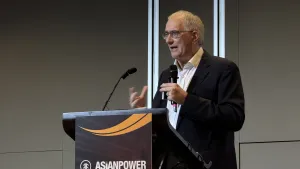Asia-Pacific social protection gaps risk climate impacts
Over half of the Asia-Pacific population is covered, but challenges like climate change require urgent action.
Over half of the population in Asia-Pacific was covered by at least one social protection benefit, marking a significant milestone for the region, according to a recent report by the International Labour Organization (ILO). However, major gaps in coverage remain, and the region's social protection systems face new challenges from climate change, ageing populations, and rapid digitalisation.
Kenichi Hirose, Senior Social Protection Specialist at the ILO Decent Work Team in Bangkok, highlighted the driving factors behind this achievement. “This was made possible and supported by the robust economic growth,” Hirose said, adding that countries across the region have made deliberate efforts to expand coverage.
Despite the milestone, nearly half of the region's population—about 2.1 billion people—still lacks access to social protection. Hirose pointed out that social protection systems are now facing additional pressures, particularly from “megatrends such as globalisation, ageing population, and climate change.”
Katinka Weinberger, Chief of the Sustainable Socioeconomic Transformations Section at the UN Economic and Social Commission for Asia and the Pacific (ESCAP), said that with Asia-Pacific particularly vulnerable to extreme weather events such as flooding and heat waves, social protection mechanisms must be enhanced to help populations cope with these risks.
ESCAP estimates that 85% of the region's population will face increasing risks due to climate change, even under the best-case scenario of limiting global warming to 1.5°C.
Weinberger elaborated on the role social protection could play in addressing these climate-related challenges, stating, “Social protection could play a really important role in enhancing climate resilience and supporting the introduction of policies related to climate mitigation and adaptation.”
Both Hirose and Weinberger identified fiscal constraints as a barrier to expanding social protection systems in the region. Currently, Asia-Pacific countries spend only 11.8% of their GDP on social protection, compared to the global average of 19.3%. Hirose pointed out that while the region has seen rapid economic growth, the share of resources allocated to social protection remains “lagging behind.”
Weinberger stressed the importance of political will in addressing this funding gap, pointing to success stories such as Mongolia’s financing of its child money program through taxation on natural resource extraction. “Progress in the region really varies. It hinges a lot on the political will of governments,” she said.









